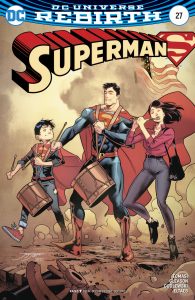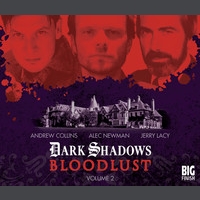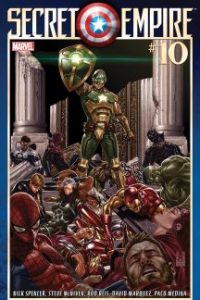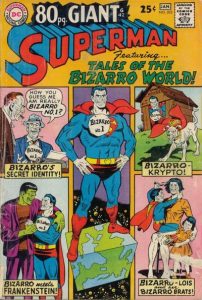 I have a great fondness for Giant-Size comics. When I started reading, DC was in its phase of publishing its most popular comics as 100-pagers, with a wealth of reprint material from the 1940s up through the 1960s. It was a great way for a new reader to get immersed in the history of the characters, and, of course, a kid got the equivalent of four comics for little more than the price of two. I have no problems with comics for adults, but I think it’s important to keep them accessible to kids. Childhood is where we really learn to dream and imagine.
I have a great fondness for Giant-Size comics. When I started reading, DC was in its phase of publishing its most popular comics as 100-pagers, with a wealth of reprint material from the 1940s up through the 1960s. It was a great way for a new reader to get immersed in the history of the characters, and, of course, a kid got the equivalent of four comics for little more than the price of two. I have no problems with comics for adults, but I think it’s important to keep them accessible to kids. Childhood is where we really learn to dream and imagine.
Anyway, I grab 80-page and 100-page issues from the past whenever I can. This one doesn’t offer much variety. It contains reprints of Bizarro World stories which had run monthly in Adventure Comics only about five years before this issue was published. They’re a bit repetitive—Bizarro’s obsession with Frankenstein shapes at least two of the stories. But they’re fun, especially when other members of the Superman family guest star. There’s not much depth to 1960s DC stories, at least those published before they shook things up around 1968; but they’re almost always fun.
One thing I find odd, in all the play that Bizarro got as a character in the 1960s, his origin was never represented in the course of my readings. Any time he appeared, we were just told he was the result of some scientist pointing an imperfect duplication ray at Superman. Although, in one story in this issue, we’re told it was pointed at Superboy instead. Continue reading

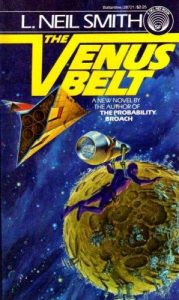

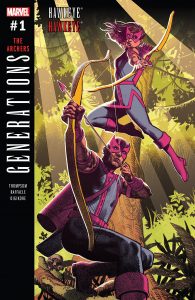
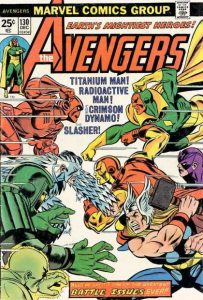 That last one is cheating a bit, since Carol is also a Bronze Agecharacter, and was, in fact, present in Mar-Vell’s book from the get-go. I can take or leave Hawkeye Clint and Hawkeye Kate. I like them both best when they’re on teams. Sort of the way I feel about Wolverine. But, flipping through this issue, I saw it heavily featured Clint’s mentor, the Swordsman. I’ve been fascinated with the Swordsman since I read the opening line of my first-ever issue of The Avengers. That was “The Swordsman is dead!” I was nine years old, and I didn’t really understand what was going on in that issue; but I could see that this was a story about a lot of heroes and villains who had a lot of history together, and I wanted to know more. That’s pretty much how Marvel hooked fans in my day—not with indigestible “Summer events,” but by presenting a complex universe as a sort of a puzzle to solve.
That last one is cheating a bit, since Carol is also a Bronze Agecharacter, and was, in fact, present in Mar-Vell’s book from the get-go. I can take or leave Hawkeye Clint and Hawkeye Kate. I like them both best when they’re on teams. Sort of the way I feel about Wolverine. But, flipping through this issue, I saw it heavily featured Clint’s mentor, the Swordsman. I’ve been fascinated with the Swordsman since I read the opening line of my first-ever issue of The Avengers. That was “The Swordsman is dead!” I was nine years old, and I didn’t really understand what was going on in that issue; but I could see that this was a story about a lot of heroes and villains who had a lot of history together, and I wanted to know more. That’s pretty much how Marvel hooked fans in my day—not with indigestible “Summer events,” but by presenting a complex universe as a sort of a puzzle to solve.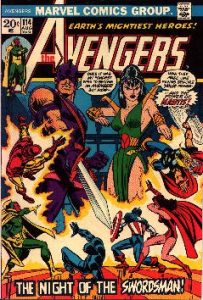
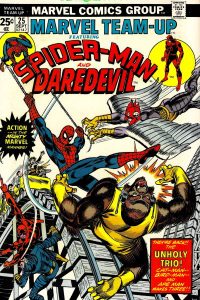
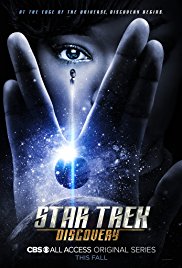
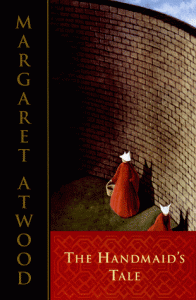
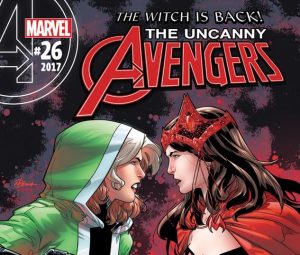 I was pleasantly surprised by this issue. I haven’t been following the series since its first couple of issues. I have no patience with the “The Scarlet Witch is so sorry for her crimes” storyline that just goes on and on. The early issues just seemed to be an extension of that, played out with Rogue as the voice of all the younger fanboys and fangirls who don’t understand that Wanda Maximoff was once a really good character, and that her downfall, like Jean Grey’s, had a lot more to do with male writers’ insecurity with powerful female characters than it did with those characters being inherently flawed.
I was pleasantly surprised by this issue. I haven’t been following the series since its first couple of issues. I have no patience with the “The Scarlet Witch is so sorry for her crimes” storyline that just goes on and on. The early issues just seemed to be an extension of that, played out with Rogue as the voice of all the younger fanboys and fangirls who don’t understand that Wanda Maximoff was once a really good character, and that her downfall, like Jean Grey’s, had a lot more to do with male writers’ insecurity with powerful female characters than it did with those characters being inherently flawed.